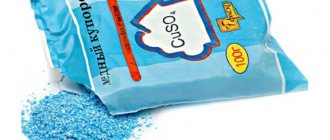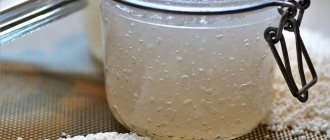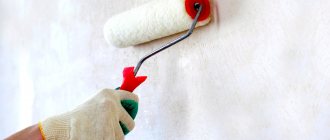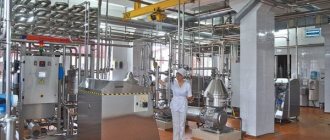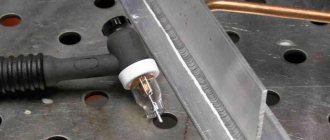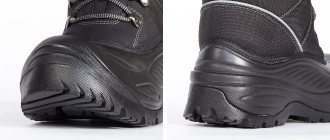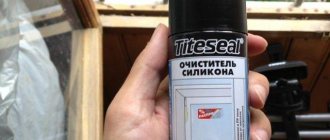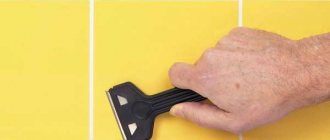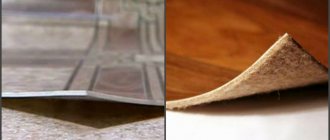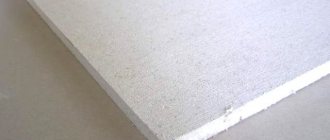Glue is a viscous substance that can stick different materials together. His role is difficult to overestimate. The mixture is used in medicine, industry, construction, and other fields. In everyday life, people use this product for household purposes. And although many are accustomed to the fact that ready-made adhesive raw materials can be purchased, there is hardly a person who has not encountered flour paste.
Homemade adhesive compositions are not only cheaper than factory-made analogues, but also superior in quality. The ingredients used in production are natural and hypoallergenic. These properties allow even small children to work with the substance without fear. The recipe is quite simple, and all the ingredients can always be found in the kitchen of any thrifty and conscientious housewife.
Application of paste
Often the paste is made from flour or starch, so it is considered an environmentally friendly means for gluing. Suitable for use in needlework and for crafts in kindergartens or at home with your own children. Since this mixture is easy to produce and has a low cost, it can also be used during redecoration for wallpapering. In the case of plywood, such canvases can be easily removed with water.
Advantages
- The paste contains non-toxic and environmentally friendly substances that do not harm the human body and do not cause allergies or irritation. The smell of the product also does not irritate the nasal mucosa.
- Does not leave stains or extra marks on the surface, even if accidentally splashed.
- This is a cheap product, and its use can significantly save your budget, especially when you need to use large volumes of glue, for example, when gluing wallpaper in large buildings.
- Wallpaper fixed with paste lasts much longer, since the product adheres to the wall better and adheres well to it.
- It performs well on surfaces of different materials and densities; it adheres equally reliably to both thin wallpaper and thick vinyl coverings.
- The adhesive mixture can be used for various purposes as a universal gluing agent.
Flaws
Despite the large number of advantages, self-prepared paste still has disadvantages.
- A homemade flour-based paste will serve you faithfully until the first wetness. If, for example, your neighbors flood you, the wallpaper on the flour mixture will quickly peel off, but this can be prevented if you improve it a little during the cooking process.
- Making paste from scratch is a little more difficult and troublesome than just buying glue and diluting it with water.
- The adhesive mixture cannot be stored for a long time. Outside the refrigerator, it will be suitable for use for no more than a day, and if stored in a cold place, it can be used for 2-3 days. After this period, the flour or starch mixture must be thrown away as it is no longer suitable for use.
Advantages and disadvantages
Before deciding whether to make wallpaper paste at home, it is important to consider all the pros and cons of such a decision, and then draw conclusions. Let's start with the positive points:
- High level of adhesion. Using homemade recipes, wallpaper can be easily fixed to any type of wall, even if it contains drying oil or paint particles that are difficult to remove.
- Safety and environmental friendliness. Starch, flour - all this is safe for health and the environment. The best option for a bedroom or nursery. In addition, wallpaper glue is hypoallergenic. It has no smell.
- Universal application. It doesn’t matter what wallpaper will be used in the decoration. A homemade paste will withstand them and ensure high-quality operation. Only very heavy canvases are best glued with special purchased glue.
- Easy to dismantle. Over time, the wallpaper needs to be replaced. The paste will help simplify the task of removing the canvas. To do this, moisten the surface with a damp cloth and wait.
- The structure of paper wallpaper will not be damaged, it will not get wet, so it will be very difficult to accidentally damage the trellises during installation.
- Invisible on the wall. The initial color of the paste is cloudy white. However, when the wallpaper dries, it becomes invisible. And if a particle of glue gets on the front part, it will not leave a mark.
If we talk about the disadvantages, then the main problem with homemade compositions is the fear of moisture. And PVA glue will not be able to make wallpaper paste as protected from moisture as the purchased version. Therefore, if the room has high humidity, these options will not be suitable. The second disadvantage is the shelf life. It does not exceed more than 24 hours. To increase it, additional manipulations described above are required.
What can it be made from?
Most often the paste is made from flour. Second or third grade flour made from wheat, rye or corn is suitable for this.
The first grade is not suitable; as a last resort, you can use “general purpose” flour. Such requirements are explained by the fact that wholemeal flour has a higher degree of viscosity due to the bran it contains.
A composition made from whole grain wheat flour will have ideal astringent properties. For its characteristics, it even received the second name “wallpaper” and is considered a good basis for preparing an adhesive composition. They are also made on the basis of rye flour, but although it provides good adhesion to the surface, it can leave stains and unnecessary marks. This paste is suitable for wallpaper in dark colors, where the appearance of small stains will not be noticeable, and it is also great for gluing heavy vinyl wallpaper.
To avoid leaving traces, which is very critical when gluing light-colored wallpaper, you can use starch-based cooking recipes. It can be made from potatoes or corn. The composition turns out to be completely transparent, but in terms of adhesion quality it is somewhat inferior to flour-based adhesive.
Depending on the area of application of the adhesive composition, various additional components may be added during its cooking. For example, when making glue for papier mache, you need to add wood glue in the proportion of 75 ml of the component per 0.2 kg of flour. Gelatin, previously diluted with water, is suitable, as indicated on its packaging. This paste makes the surface treated with it more durable.
- To increase the fixing properties of the composition, wood glue or PVA is poured into it. The first ingredient is added to the mixture to treat dark surfaces, and PVA is added to work with light materials.
- To disinfect the mixture and prevent the reproduction of various microorganisms and insects under the wallpaper treated with it, copper sulfate should be added to the paste in a ratio of 10 g per 1 kg of flour. Small pests are attracted to the product by its natural composition.
- If the paste is used to make textile jewelry, you can add a little vanillin or vanilla sugar to it, but not more than 0.5 teaspoon. for 20 g flour. These components will add elasticity and shine to the fabric.
When making glue for children, it is better not to use additives, but to brew a pure composition.
Where is it used?
Homemade glue, made from flour mixed with water, is used for various purposes. It is used by librarians, chemists, agronomists and gardeners, and employees of children's institutions. Among the most well-known areas of application are:
For household needs:
- Repair work. Using the natural mass, wallpaper is glued to walls, windows are covered, and surfaces are primed for finishing.
- Gardening. To plant seeds evenly in the garden bed, they are glued onto toilet paper.
- Children's creativity and handicrafts. The harmless and hypoallergenic composition perfectly replaces glue; even the smallest children can work with it. It is used to make papier-mâché and other paper products, use it for scrapbooking, and create fabric compositions.
In professional activities:
- Librarians glue books with paste and use it to perform bookbinding work.
- Chemists use it as an indicator.
- Kindergarten teachers and primary school teachers use this material in classes that instill in children perseverance, concentration, developing thinking, and fine motor skills.
- Theater workers use paper objects to decorate the stage and make props.
- Designers use the substance to hold together various decorative elements.
How to make paste from flour and water
- Pour flour into a deep bowl and pour water into it on top of the flour, but not vice versa.
- Using a whisk, thoroughly stir the contents of the bowl to prevent the formation of lumps.
- Fill a separate enameled or galvanized container with water and place it on the tile.
- Wait for the water to boil.
- Gradually pour the mixture from the first vessel into boiling water, while constantly stirring the composition.
- When the mixture in the pan becomes thick like sour cream, it should be removed from the stove and left to cool completely.
This recipe uses ingredients in a ratio of 1 liter of water per 4 tablespoons. lie light wheat flour, which has the best adhesive characteristics and does not leave stains.
It is better to buy cheap, low-quality flour; it produces a higher-quality adhesive. Before preparing the composition, the flour must be sifted.
This algorithm is used to prepare window pastes, which are used to cover cracks in wooden frames. Before use, the adhesive composition must be cooled, since the hot mixture can cause harm to the surface being treated.
How to enhance the effect of purchased wallpaper glue
Regular sugar is the best wallpaper glue enhancer
The use of glue purchased in construction stores does not always guarantee high quality of the finished result. That is, the wallpaper begins to move away from the walls over time. What can be done to prevent this from happening?
- First, you need to prepare the solution in strict accordance with the manufacturer's instructions.
- Secondly, try pouring granulated sugar into the prepared solution, at the rate of 1 kg of sugar per 10 liters of mixture. The result will be amazing, since the reinforced glue will stick to any wallpaper.
How to prepare starch paste
The formula of the paste is similar to that where flour and water are used, with the only difference being that after cooling, the starch paste is diluted with PVA glue to ensure moisture resistance.
To cook a starch-based paste you will need:
- potato starch;
- water;
- PVA glue.
From the kitchen utensils you need to take dishes for diluting the composition, a sieve, a spoon for stirring and gauze.
Prepare the adhesive mixture as follows:
- sift the starch through a sieve, remove dirt and lumps;
- pour starch into boiling water, constantly stirring the solution to prevent the formation of lumps;
- when the mixture has the consistency of thick sour cream, dilute PVA glue in it;
- the resulting solution is brought to a boil;
- the hot mixture is filtered through cheesecloth, all existing lumps are removed from it;
- you need to wait until the mixture cools down.
One packet of starch is enough to prepare one bucket of adhesive mixture. A starch mixture with the addition of PVA can be used for light and pastel wallpaper or white paper; if you need to glue dark surfaces, it is better to use wood glue instead of PVA, which gives the solution a dark color.
Starch-based adhesive is used where transparency of the adhesive is required. If this parameter is not important, it is better to use a flour-based solution for greater strength.
The adhesive from corn starch is prepared in a similar way.
DIY dextrin paste
Most often used to create papier-mâché and in needlework. It's very easy to prepare at home. The main thing is to mix the ingredients correctly. To do this, dilute 20 g of starch and half a teaspoon of sugar in 50 ml of water.
Unlike conventional starch glue, in which the ingredient must simply be sifted before boiling, in this recipe, after sifting, potato starch must be heated in the oven on a baking sheet at t = 400 °C until translucent brown bubbles form. After cooling, the bubbles should harden.
Let us describe the instructions for preparing dextrin glue in more detail:
- potato starch is sifted and heated in the oven;
- the composition cools and hardens;
- brown lumps are crushed into powder;
- the powder is diluted with boiling water in the required proportion;
- sugar is added, the solution is mixed until smooth.
Recipes for different wallpaper weights
To prepare an adhesive mixture for gluing light paper wallpaper, you will need 150 g of rye flour or 0.2 kg of wheat flour, 1 liter of water, a saucepan and a deep plate.
- Pour flour into a plate and add a cup of cold water. The mixture is stirred until it becomes thick sour cream.
- Boil the rest of the water in the pan.
- Pour the flour mixture into the boiling water on the fire in a thin stream, stirring constantly.
- Boil the mixture for another 3-5 minutes. until it boils.
- Remove the prepared mixture from the stove and cool.
For heavy wallpaper on a non-woven or vinyl base, you need to use a thicker paste with enhanced fixation.
It is prepared similarly to the previous composition (from 1 liter of water and 0.4 kg of flour). In some cases, a special composition is made, which is used not only as wallpaper adhesive, but can serve as a final primer for surfaces and is suitable for tiling small format tiles. To prepare such an adhesive mixture you need 20 ml of ethyl alcohol, 0.15 kg of flour, 4 g of glycerin, 5 g of photographic gelatin and 1 liter of distilled water. You can also use regular gelatin, but then the adhesive properties of the composition will be lower.
- Gelatin is poured into a glass of water and left for a day.
- A day later, 850 ml of distilled water is poured into a container with gelatin, and this composition is boiled in a water bath with thorough stirring.
- Flour is diluted in 150 ml of water until the lumps are completely dissolved.
- The flour mixture is poured into a saucepan with gelatin.
- The composition is brought to a boil with constant stirring. It is necessary to achieve a homogeneous structure.
- Add glycerin and ethyl alcohol, stir the mixture for 10 minutes.
- The glue is removed from the water bath and cooled.
Related article: how to properly glue wallpaper
With the addition of PVA
Making wallpaper paste from flour is not difficult, but people often become interested in how to use PVA glue. Since this component cannot be used in its pure form for wallpapering, a solution can be prepared from it.
To do this you will need to take glue and cold water in a ratio of 1:2. As in previous recipes, both components must be mixed until a homogeneous mixture is achieved.
The difference between this product is that it is not stored for too long. Therefore, you should not prepare it “for the future.”
If desired, you can add starch or flour to the recipe. This will increase the volume of the finished mass and extend its shelf life. The selected powder should be taken in an amount of one third of the taken volume of PVA glue.
PVA diluted with water, as well as a paste made from flour or starch, are constantly used in creativity in the manufacture of papier-mâché. This is well written here.
What should the paste be like?
When it became clear how to prepare wallpaper paste, it is also necessary to mention the basic requirements for it.
The home composition should be:
- easy to prepare;
- easy to use;
- environmentally friendly.
In addition, a self-created paste should have excellent adhesion to different substrates. This is how a home remedy differs from store-bought products.
How to make paste waterproof
Having chosen a method for making wallpaper paste, people often ask about the water resistance of this composition. After all, such a product is often used in rooms with high humidity, which is why it must be able to withstand exposure to dampness.
Made from flour or starch, wallpaper paste can easily be made resistant to liquids. To do this, you will need to add regular PVA or office glue to it. It is difficult to indicate a clear amount of the additional component - it must be introduced into the mixture gradually so that it does not become too thick.
Recipes for flour paste for wallpaper
Now it’s time to figure out how to cook wallpaper paste with the addition of various components. You should start making the composition only after clearly defining the type of wallpaper to be glued.
They can be simple paper, heavier in weight or textile. Each type of product has its own recipe, and the finished mixtures differ from each other in thickness and strength.
Recipe for light wallpaper
The simplest DIY wallpaper paste is intended for light repair work. It is great for light weight products.
You need to make a paste for wallpapering from two components - flour and water. They should be taken in a ratio of 1:4. Additionally, you will need to take two bowls of different sizes.
The first step is to make a thick dough in a smaller container, and then move the resulting lump into a larger one and dilute it with the remaining amount of water.
Next, the mixture must be placed over low or medium heat and brought to a boil. Immediately after this, the paste can be removed from the stove and used.
For gluing heavy vinyl wallpaper
Answering a frequently asked question about how to prepare a paste from flour for wallpaper, you need to distinguish between the compositions for light and heavy (vinyl) products. In the first case, the composition should not be too thick, in the second, the opposite is true.
Therefore, if you need to glue vinyl wallpaper, you need to turn to another recipe for wallpaper paste made from flour. The proportions of these components are 1:2. And the cooking process here will be the same as in the previous method.
High strength composition
This product is intended for priming walls. It is made from the following ingredients:
- distilled water – 2 liters;
- gelatin – 10 g;
- glycerin – 8 g;
- wheat flour – 300 g;
- medical alcohol – 40 ml.
The step-by-step recipe will be:
- Dilute gelatin in a glass of water and leave for a day.
- After the specified time, combine the resulting mixture with a small amount of water and place in a water bath, stirring occasionally.
- Separately, dilute the flour with water so that a liquid dough comes out, and then stir until the lumps are eliminated.
- Combine the mixtures together and send the whole mass to a water bath.
- Bring the mixture to a boil and add glycerin.
- Mix thoroughly with a wooden spoon or spatula, remove from heat and leave at room temperature until cool.
For pasting textiles
Another option, how to make wallpaper paste, will help people who use textile products.
In this recipe the main ingredients are:
- 1 tbsp. sifted flour;
- 1 glass of cool water;
- ¼ tsp. Sahara;
- a pinch of vanillin.
The first step to making wallpaper glue from flour is to combine the flour with ¼ cup of water and mix well.
Then you need to pour all the remaining liquid into a separate container, add sugar there and put it on medium heat.
As soon as the water boils, without removing from the heat, add the flour mixture and cook until the mixture reaches the desired thickness.
Next, remove the container with the paste from the heat, immediately add vanillin to the mixture, stir the mixture and let it cool.
How to enhance the effect of purchased wallpaper glue
Unlike homemade wallpaper paste, store-bought paste does not guarantee high efficiency in all cases. The main problem with compounds purchased in hardware stores is that the wallpaper glued to them begins to peel away from the surface after a while. But fortunately, it is quite possible to correct this situation.
The effect of industrial glue is enhanced by regular granulated sugar. It must be diluted in the composition, taking at the rate of 1 kg of sugar per 10 liters of glue. The resulting mixture will please all craftsmen, since it will hold wallpaper of absolutely any weight.
Recipe for fabric crafts
For cooking you need 2 tables. lie flour, 2 glasses of water, ½ tsp. sugar and a pinch of vanillin. Step-by-step instructions will be like this:
- Flour is poured into the pan and filled with half a glass of water;
- the composition is thoroughly mixed to a homogeneous consistency;
- 1.5 cups of water and sugar are mixed in a separate container, the mixture is put on fire;
- pour the flour mixture into the boiled sugar syrup;
- the composition is cooked over fire with constant stirring;
- as soon as the mixture begins to thicken, it must be removed from the burner;
- Vanillin is poured in, the mixture is thoroughly mixed and left to cool completely.
Recipe for papier-mâché
You need to take a glass of flour, half a teaspoon of salt and 3 glasses of water. The composition is prepared as follows:
- sifted flour is poured into a glass of water and kneaded until smooth;
- salt is added and kneaded again;
- 2 cups of water are boiled in a separate pan and then added to the adhesive composition;
- The resulting mixture is boiled over a fire for 10 minutes, removed from the stove and left to cool completely.
If making papier-mâché involves using paper soaked to a plastic mass, the paste needs to be made more liquid, then no more than 100 g of flour should be used per liter of water.
How to store?
It will not be possible to store such a natural solution for a long time , otherwise all the adhesive properties of the mixture will gradually deteriorate. If the remaining glue is planned to be used further, it must be poured into a new container with a tight-fitting lid and placed in the refrigerator. The product can be stored in the cold for a maximum of 1 day. Therefore, experts recommend boiling it 2 hours before use and try not to store it for longer than a day.
When the consistency of a too thick mass has already undergone changes (the proportions of water or flour have changed), it has an unpleasant sour smell, the workpiece must be boiled again over low heat, then add a spoonful of alcohol and stir thoroughly until smooth.
Advice
One of the effective recipes for extending the service life of the paste is to prepare it from flour with the addition of carbolic acid (no more than 25 g per 10 liters).
We described how to properly store wallpaper and glue diluted for it in this article.
Savings during renovations sometimes pay off. The homemade equivalent of wallpaper glue, paste, is one of the successful life hacks that have remained relevant for decades. The mixture is safe, easy to prepare and cheap, not to mention the quality is not inferior to store-bought building materials.
Cooking rules and tips
- The finished mixture must be used within the first day after cooking, otherwise it may turn sour.
- An adhesive composition made from rye flour cannot be used when gluing thin wallpaper in light colors, as this is fraught with the appearance of yellow spots appearing over the entire surface.
- To repel parasites and insects from the paste, it is necessary to add karbofos to it during production.
- In order for the paste to lie evenly on the wallpaper and be moderately liquid, you need to avoid overcooking the adhesive mass. If this happens, then in order to make it more liquid, you need to add the required amount of water and heat the composition again. If the paste is too thin, this can be corrected using a thickener.
- In a warm room, the adhesive composition loses its astringent qualities, so it must be stored in a cool place at a temperature not exceeding +18 ... + 20 ° C.
- The preparation of the composition must be done before using it, since its maximum fixing properties are revealed at a mass temperature of +40°C.
- To prepare starch glue, you can use both potato and corn starch, the result does not change.
- If it is necessary to increase the moisture resistance of flour glue, then during its cooking you should add PVA glue, but not less than 5% of the total mass.
Requirements
The paste is positioned as a universal product that can be brewed and used for different areas, and not only for repairs. This does not mean that the mixture may be of poor quality - the wrong consistency will not fix the wallpaper on the wall, so it will peel off immediately. To understand which composition will be ideal, you should focus on the following requirements:
- Moderate thickness (the glue should not be too viscous, but should stretch. If the mixture turns out to be too liquid, you do not need to immediately add a new portion of flour to it - you can set the paste aside for 1-2 hours so that it reaches the dough condition on its own).
- Neutral color (the mixture should resemble classic glue - be white with an acceptable shade of yellow. If PVA was added, the result may be more transparent, but sharp tones are excluded - this is a sign of defect).
AdviceSome types of flour (for example, corn) can give a richer shade. But it’s better not to take specific varieties as a basis. They will be more expensive, and they are not suitable as a construction ingredient.
- No lumps (if kneading too intensively, lumps may appear - you need to get rid of them by sifting through gauze or carefully selecting them by hand. Do not try to crush or grind them, otherwise unsightly lumps may form under the wallpaper).
The main advantage of the paste is its basis. Since it consists of environmentally friendly materials, its organic composition can turn into a big drawback over time. These components are good food for all kinds of insects and microorganisms, so it is advisable to add products to the mixture that will make the composition “inedible”, then the wallpaper will not become a habitat for parasites.
Adjusting the consistency
After cooking and with gradual cooling, the paste begins to thicken. To return it to its previous consistency and not to deteriorate its adhesive qualities, you can bring it to the desired viscosity using boiling water. It needs to be added to the composition 1 table at a time. lie with constant stirring with a blender or mixer. After diluting with water, the mixture must be brought to a boil again.
The thickness of the adhesive mixture can only be assessed when it has cooled to a temperature of 40°C. If you feel that the consistency is too thin, you need to thicken it a little. This can be done by adding flour. It is mixed with water in a separate container to form a batter and poured into a thick paste. The composition is mixed and boiled.
Under no circumstances should you try to add flour dry, as this will lead to the formation of a large number of lumps in the finished mixture.
Ingredients
The word “paste” itself can serve as a hint on how to cook it and what ingredients will be needed for this. Translated from German, it means glue made from starch or flour. And you don’t need any chemical components to make it yourself. The composition contains only water and one of the dry ingredients.
The choice of dry ingredient depends on the future use of the glue. For example, flour is more suitable for wallpapering walls or making children's crafts, since the finished product leaves no traces after use. Accidental contamination can be easily removed even after drying. Wallpaper, cardboard, and craft paper do not get wet, and the surfaces are firmly glued together.
The amount of ingredients included in the paste recipe is taken from the calculation:
- wholemeal flour (grade 1 product is suitable) – 0.25 kg;
- water – 1 l.
To make wallpaper paste, you will need coarse flour.
Storage rules
The finished paste should be stored for no more than 10 days and only in the refrigerator. In this case, the container with the composition must be covered with a lid or plastic wrap. After long-term storage, a dense crust forms on the adhesive mixture, which must be removed before reusing the product. If mold appears on the adhesive composition, it means it cannot be used for its intended purpose.
It is best to prepare an exact portion of the paste, which will be enough for 1 day of planned work, so that you do not have to store the composition, because every day its quality characteristics decrease significantly.
Let's sum it up
Now you know how to make paste from inexpensive materials that are probably available in every household. You can see more interesting information on the topic by watching the video in this article. If you have any questions, ask them in the comments.
Did you like the article? Subscribe to our Yandex.Zen channel
June 26, 2022
Wallpaper,Construction Chemicals
If you want to express gratitude, add a clarification or objection, or ask the author something, add a comment or say thank you!
